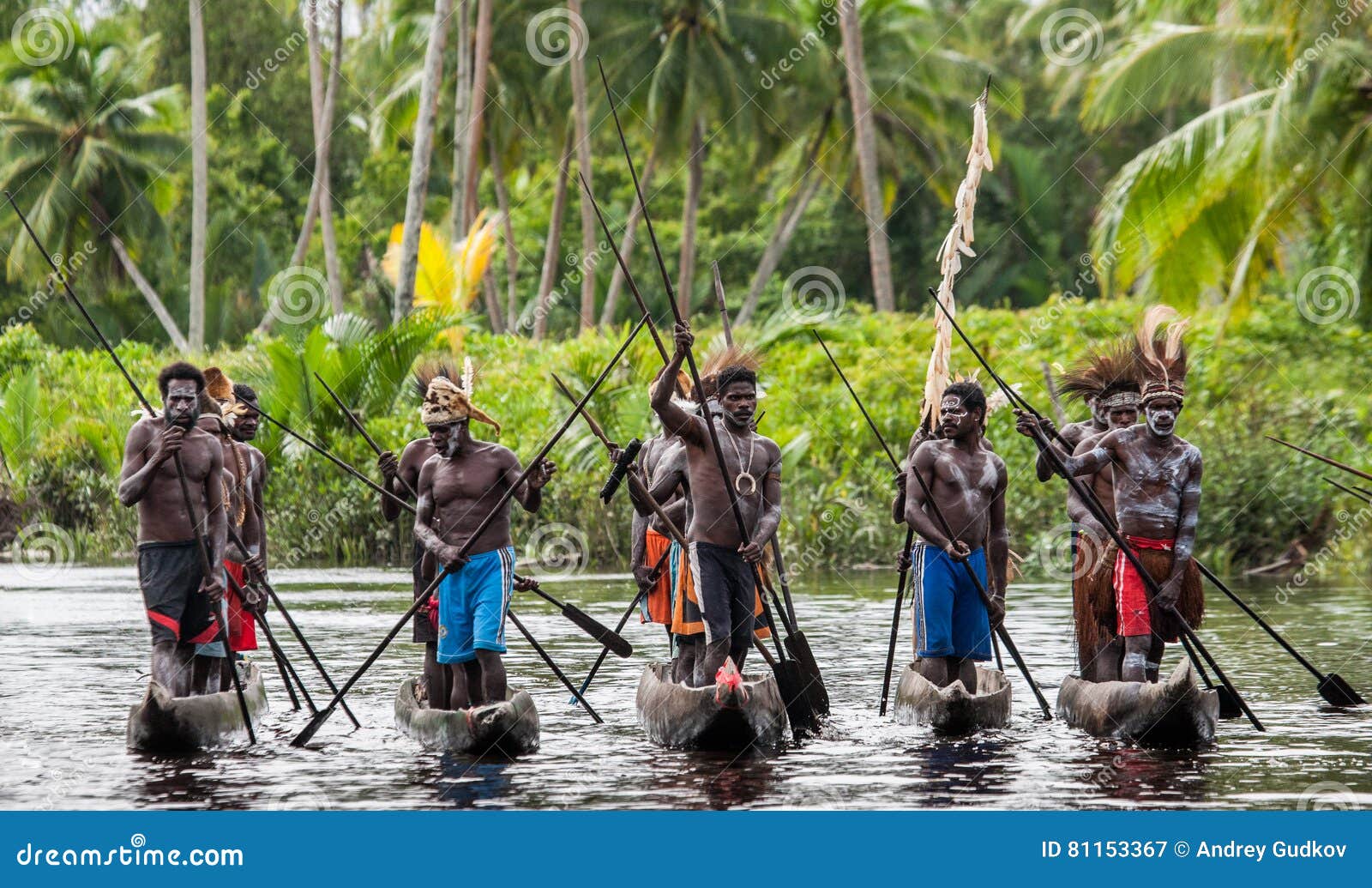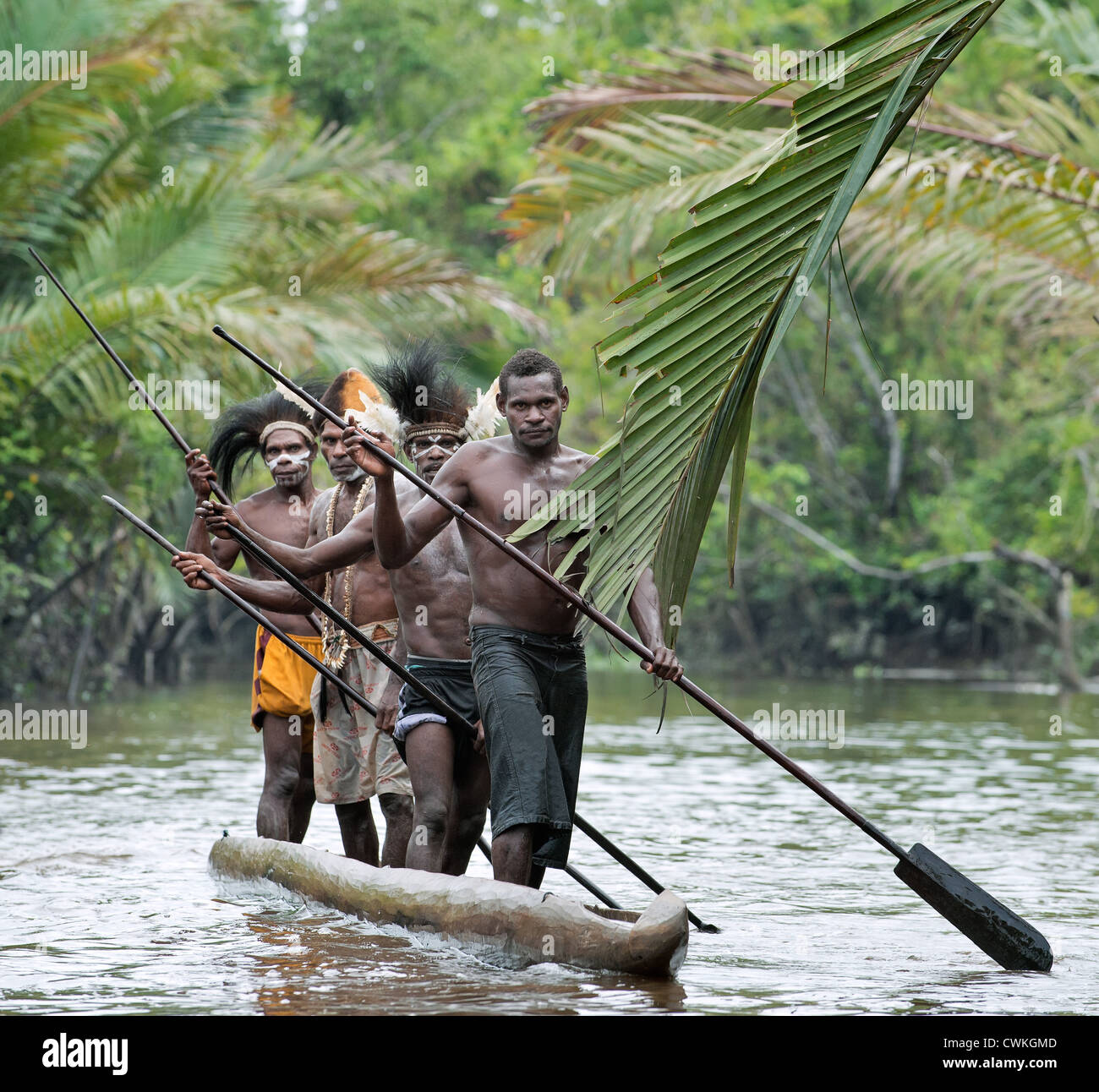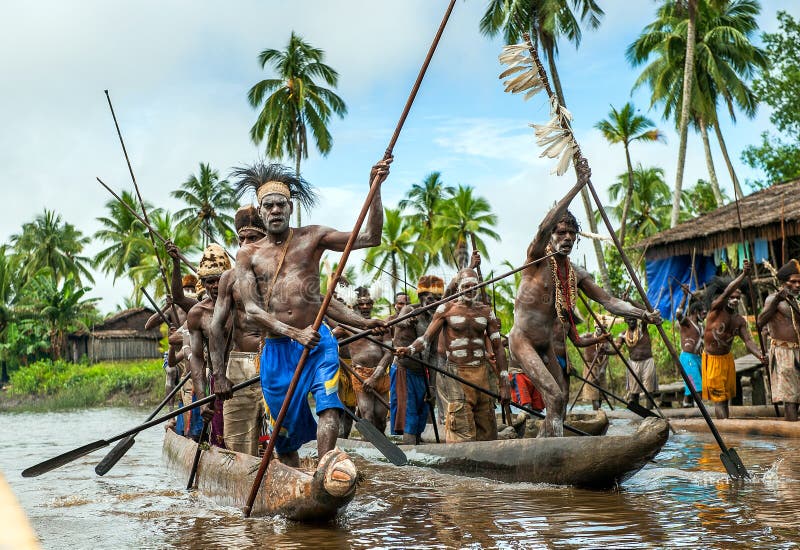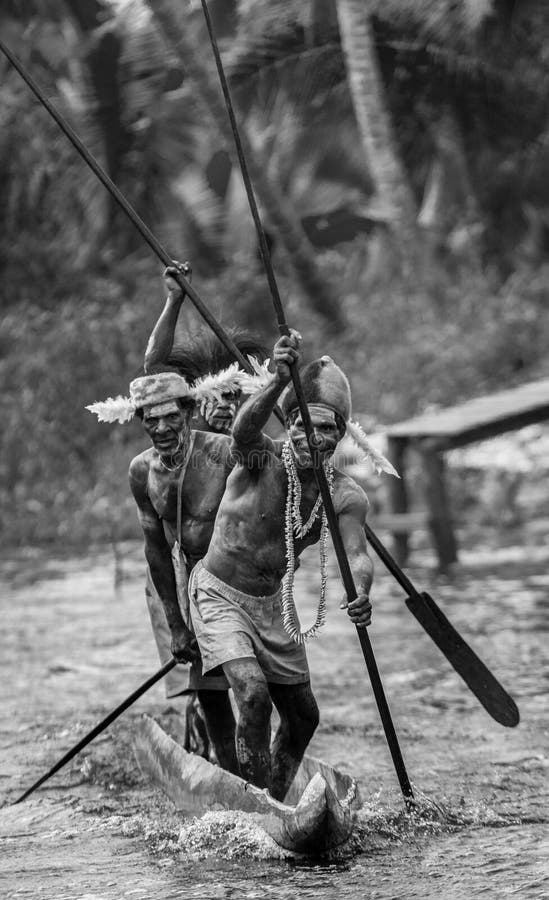
Canoe war ceremony of Asmat people. Headhunters of a tribe of Asmat
The Asmat's traditional canoeing way of life is slowly being replaced by motorboats and speedboats, with the help of local government subsidies. Photograph: Joshua Irwandi During the Pokman.

Asmat Men Paddling in Their Dugout Canoe Editorial Photography Image
Canoes are essential to life int he Asmat region, providing the only means of transportation for fishing and food-gathering expeditions, visiting neighboring communities, and, in the past, for embarking on headhunting raids. When paddling the canoes, the paddlers stand erect, skillfully maintaining their balance as they dip the blades in the water

Canoe war ceremony of Asmat people Stock Editorial Photo © SURZet
An extensive sea, air and land search turned up nothing, and the mystery surrounding his disappearance left the Rockefellers—and the world—perplexed. They assumed he drowned. They were wrong. He.

Warriors Asmat Tribe are Use Traditional Canoe. Editorial Photography
The Asmat are a Melanesian, or Papuan, people who live within the Indonesian province of Papua that occupies most of the western half of the island of New Guinea.

Indigenous Boats Asmat Spirit Canoe
ASMAT. The Asmat is a group of former cannibals and headhunters that live along the remote southwest coast of Papua. Also known as the Asmat-wo and Samot, they are a hunting, fishing and gathering people famed for their elaborate woodcarving.. An Asmat raiding party typically took off in canoes and parked them a couple of river bends before.

Warriors Asmat Tribe are Use Traditional Canoe. Editorial Photography
A Superb Old New Guinea Asmat Canoe Prow Ornament from the South Coast of West Papua (Irian Jaya) Indonesia This very fine Asmat Sculpture was once on the front of a large war canoe that held about 20 to 25 warriors standing up and paddling. The canoe & canoe prow ornament was carved from a single large tree.

Warriors Asmat Tribe are Use Traditional Canoe. Editorial Stock Image
Art helps us reexamine the past and imagine the future. This exhibition considers how changes in Asmat society led to new art forms and the alteration of traditional practices. It looks at the current situation in Papua and questions how visual culture from Asmat may be affected in the future.

Warriors Asmat Tribe are Use Traditional Canoe. Editorial Photo Image
1 digitised slide Context area Name of creator Muller, Kal (1939-) Biographical history Kal Muller, documentary film maker, photographer, writer, tribal art dealer and world traveller, was born in Budapest, Hungary and later on moved to the U.S.A., where he studied his doctorate on French literature at the University of Arizona. During most. »

Warriors Asmat Tribe are Use Traditional Canoe. Editorial Image Image
Expert woodcarvers in a land without stone, the Asmat crafted ornate shields, paddles, drums, canoes and ancestor poles, called bisj, embodying the spirit of an ancestor. The bisj poles were 20.

Warriors Asmat Tribe are Use Traditional Canoe. Editorial Photo Image
Ci is the Asmat word for dugout canoe. The ci is an integral part of the everyday life of the Asmat - an ethnic group residing in eastern Indonesia in Papua province (formerly Irian Jaya) - who live in the middle of a huge tidal swampy area. Owning a ci is part of the Asmat's habitus because ci is a guarantee for mobility, both individually and collectively.

Indigenous Boats Asmat Spirit Canoe
In interior Asmat villages, wuramon, or spirit canoes (1979.206.1558), serve a similar function. *** "Asmat body masks are full-length costumes made of plaited cordage composed of rattan, bark, and sago leaf fiber. The body masks are usually painted with red and white pigment, decorated with carved facial features, and given skirts made of.

Canoe war ceremony of Asmat people Stock Photo Alamy
A Superb Old New Guinea Asmat Canoe Prow Ornament from the South Coast of West Papua (Irian Jaya) Indonesia This very fine Asmat Sculpture was once on the front of a large war canoe that held about 20 to 25 warriors standing up and paddling. The canoe & canoe prow ornament were caved from a […]

Canoe War Ceremony of Asmat Editorial Image Image of civilization
All large Asmat canoes have carved prows, and those of large communal canoes, such as the present one, are especially ornate, adorned with images of ancestors and headhunting symbols. Nearly fifty feet long and capable of carrying twenty people, this canoe was carved by the master woodcarver Chinasapitch of Per village, assisted by other men.

Canoe War Ceremony of Asmat People. Headhunters of a Tribe of Asmat
Vasem Spirit Canoe (Wuramon) Ceremonial container Emily Caglayan, Ph.D. Department of Art History, The Graduate Center, City University of New York October 2004 Located in southwestern New Guinea, the Asmat live along the vast system of rivers that flow into the Arafura Sea.

Warriors Asmat Tribe are Use Traditional Canoe. Editorial Image Image
Asmat spirit canoe (wuramon) at Metropolitan Museum of Art. The spirit figures are lashed to the gunwales. Spirit figures looking down through bottom of hull. The gunwale displays a fine pattern on the outer surface. Spirit figures at stern. The turtle spirit figure symbolizes fertility. Behind it is an okom, "a dangerous Z-shaped water spirit."

Warriors Asmat Tribe are Use Traditional Canoe. Editorial Stock Image
The Asmat people live on the western half of the Island of New Guinea. This area, called Papua, is the largest and least developed of all of Indonesia's 27 provinces. Dense forest and mangrove swamp cover 85% of its area and parts of the interior remain unexplored.